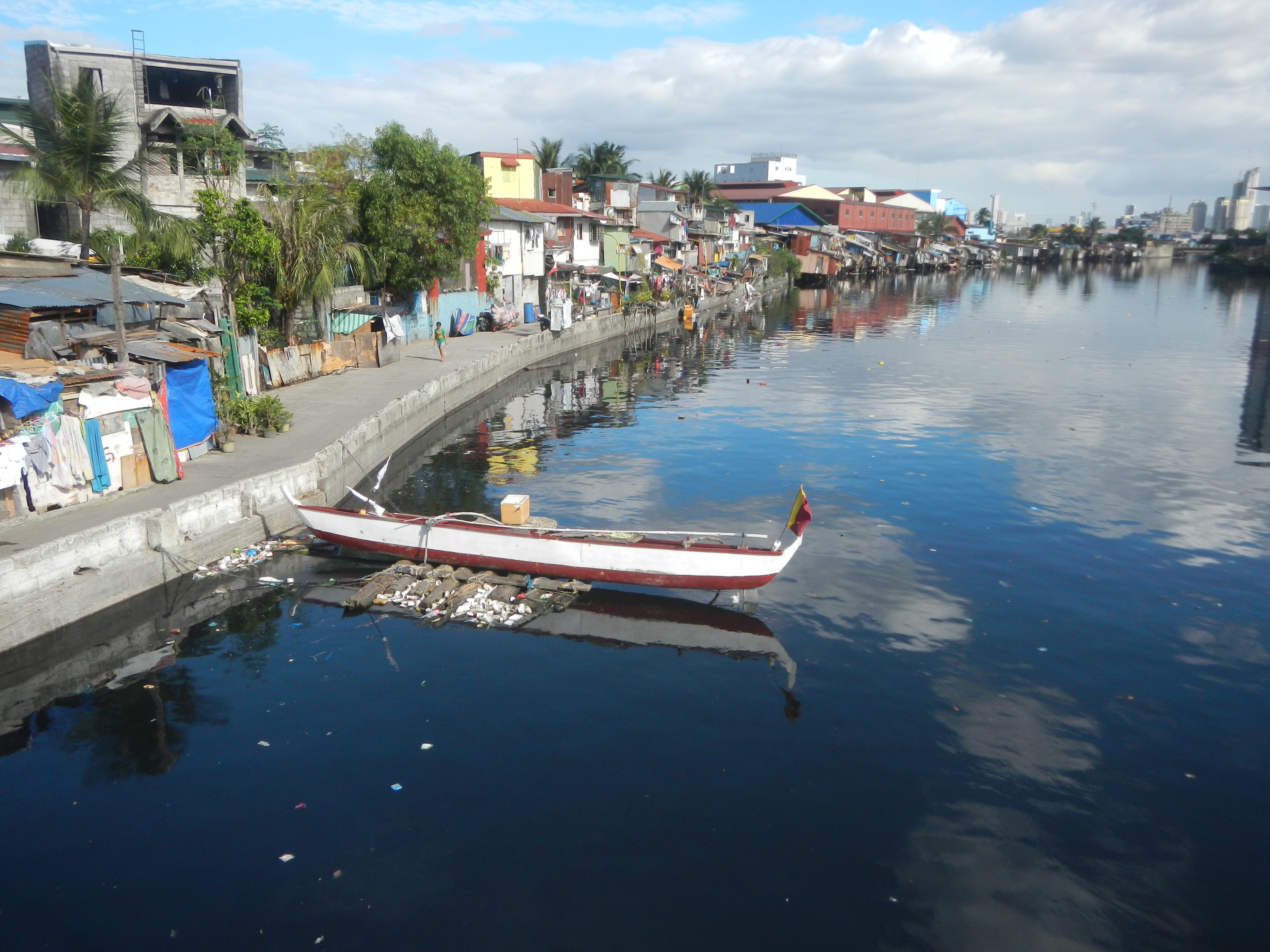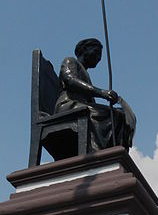|
Estero De Vitas
The Estero de Vitas is one of the rivulets, known as ''esteros'', which delineated the small islands which historically constituted the city of Manila and its predecessors, the Tagalog polities (called ''bayan'') of Maynila and Tondo. These esteros, along with the larger rivers of Manila Bay and the Pasig River The Pasig River ( fil, Ilog Pasig) is a water body in the Philippines that connects Laguna de Bay to Manila Bay. Stretching for , it bisects the Philippine capital of Manila and its surrounding urban area into northern and southern halves. Its ... delta, originally formed an important connecting network which allowed the precolonial polities of that Tagalog and Kapampangan peoples. The Estero de Vitas drains water from Manila as far as Tayuman Street, and then dumps water directly to Manila Bay. It is connected to the Navotas River, as well as to Canal de la Reina and Estero de Sunog Apog. References Rivers of Metro Manila {{Philippines-geo-stub ... [...More Info...] [...Related Items...] OR: [Wikipedia] [Google] [Baidu] |
Rivulet
A stream is a continuous body of surface water flowing within the bed and banks of a channel. Depending on its location or certain characteristics, a stream may be referred to by a variety of local or regional names. Long large streams are usually called rivers, while smaller, less voluminous and more intermittent streams are known as streamlets, brooks or creeks. The flow of a stream is controlled by three inputs – surface runoff (from precipitation or meltwater), daylighted subterranean water, and surfaced groundwater (spring water). The surface and subterranean water are highly variable between periods of rainfall. Groundwater, on the other hand, has a relatively constant input and is controlled more by long-term patterns of precipitation. The stream encompasses surface, subsurface and groundwater fluxes that respond to geological, geomorphological, hydrological and biotic controls. Streams are important as conduits in the water cycle, instruments in groundwater rec ... [...More Info...] [...Related Items...] OR: [Wikipedia] [Google] [Baidu] |
Manila
Manila ( , ; fil, Maynila, ), officially the City of Manila ( fil, Lungsod ng Maynila, ), is the capital of the Philippines, and its second-most populous city. It is highly urbanized and, as of 2019, was the world's most densely populated city proper. Manila is considered to be a global city and rated as an Alpha – City by Globalization and World Cities Research Network (GaWC). It was the first chartered city in the country, designated as such by the Philippine Commission Act 183 of July 31, 1901. It became autonomous with the passage of Republic Act No. 409, "The Revised Charter of the City of Manila", on June 18, 1949. Manila is considered to be part of the world's original set of global cities because its commercial networks were the first to extend across the Pacific Ocean and connect Asia with the Spanish Americas through the galleon trade; when this was accomplished, it marked the first time in world history that an uninterrupted chain of trade routes circling ... [...More Info...] [...Related Items...] OR: [Wikipedia] [Google] [Baidu] |
Rajahnate Of Maynila
In early Philippine history, the Tagalog Bayan ("country" or "city-state") of Maynila ( tl, Bayan ng Maynila; Pre-virama Baybayin: ) was a major Tagalog city-state on the southern part of the Pasig River delta, where the district of Intramuros currently stands.Abinales, Patricio N. and Donna J. Amoroso, State and Society in the Philippines. Maryland: Rowman and Littlefield, 2005. Historical accounts indicate that the city-state was led by sovereign rulers who were referred to with the title of ''raja'' ("king"). Other accounts also refer to it as the "Kingdom of Luzon", although some historians suggest that this might rather refer to the Manila Bay region as a whole. The earliest oral traditions suggest that Maynila was founded as a Muslim principality in as early as the 1250s, supposedly supplanting an even older pre-Islamic settlement. However, the earliest archeological findings for organized human settlements in the area dates to around 1500s. By the 16th century, i ... [...More Info...] [...Related Items...] OR: [Wikipedia] [Google] [Baidu] |
Tondo (historical Polity)
In History of the Philippines (900–1521), early Philippine history, the Tagalog people, Tagalog settlement at Tondo (; Baybayin: ) was a major trade hub located on the northern part of the List of islands in the Greater Manila Area, Pasig River delta, on Luzon island.Abinales, Patricio N. and Donna J. Amoroso, State and Society in the Philippines. Maryland: Rowman and Littlefield, 2005. as referred to in http://malacanang.gov.ph/75832-pre-colonial-manila/#_ftn1 Together with Maynila, the polity (''bayan'') on the southern part of the Pasig River delta, it established a shared monopoly on the trade of Chinese goods throughout the rest of the Philippine archipelago, making it an established force in trade throughout Southeast Asia and East Asia. Tondo is of particular interest to Filipino historians and historiography, historiographers because it is one of the oldest historically documented settlements in the Philippines. Scholars generally agree that it was mentioned in the ... [...More Info...] [...Related Items...] OR: [Wikipedia] [Google] [Baidu] |
Manila Bay
Manila Bay ( fil, Look ng Maynila) is a natural harbor that serves the Port of Manila (on Luzon), in the Philippines. Strategically located around the capital city of the Philippines, Manila Bay facilitated commerce and trade between the Philippines and its neighboring countries,Jacinto, G.S., Azanza, R.V., Velasquez, I.B. and Siringan, F.P.(2006)."Manila Bay:Environmental Challenges and Opportunities" in Wolanski, E.(ed.) The Environment in Asia Pacific Harbours. Springer: Dordrecht, Netherlands. p309-328. becoming the gateway for socio-economic development even prior to Spanish occupation. With an area of , and a coastline of , Manila Bay is situated in the western part of Luzon and is bounded by Cavite and Metro Manila on the east, Bulacan and Pampanga on the north, and Bataan on the west and northwest.Jacinto, G.S., Velasquez, I.B., San Diego-McGlone, M.L., Villanoy, C.L. and Siringan, F.B.(2006)."Biophysical Environment of Manila Bay - Then and Now", in Wolanski, E.(ed.)Th ... [...More Info...] [...Related Items...] OR: [Wikipedia] [Google] [Baidu] |
Pasig River
The Pasig River ( fil, Ilog Pasig) is a water body in the Philippines that connects Laguna de Bay to Manila Bay. Stretching for , it bisects the Philippine capital of Manila and Metro Manila, its surrounding urban area into northern and southern halves. Its major tributaries are the Marikina River and San Juan River (Metro Manila), San Juan River. The total drainage basin of the Pasig River, including the basin of Laguna de Bay, covers . The Pasig River is technically a tidal estuary, as the flow direction depends upon the water level difference between Manila Bay and Laguna de Bay. During the dry season, the water level in Laguna de Bay is low with the river's flow direction dependent on the tides. During the wet season, when the water level of Laguna de Bay is high, the flow is reversed towards Manila Bay. The Pasig River used to be an important transport route and source of water for Spanish colonization of the Philippines, Spanish Manila. Due to negligence and industrial d ... [...More Info...] [...Related Items...] OR: [Wikipedia] [Google] [Baidu] |
Tagalog People
The Tagalog people ( tl, Mga Tagalog; Baybayin: ᜋᜅ ᜆᜄᜎᜓᜄ᜔) are the largest ethnolinguistic group in the Philippines, numbering at around 30 million. An Austronesian people, the Tagalog have a well developed society due to their cultural heartland, Manila, being the capital city of the Philippines. They are native to the Metro Manila and Calabarzon regions of southern Luzon, and comprise the majority in the provinces of Bulacan, Bataan, Nueva Ecija and Aurora in Central Luzon and in the islands of Marinduque and Mindoro in Mimaropa. Etymology The commonly perpetuated origin for the endonym "Tagalog" is the term ''tagá-ilog'', which means "people from longthe river" (the prefix ''tagá-'' meaning "coming from" or "native of"). However, this explanation is a mistranslation of the correct term ''tagá-álog'', which means "people from the ford". Historical usage Before the colonial period, the term "Tagalog" was originally used to differentiate river dwelle ... [...More Info...] [...Related Items...] OR: [Wikipedia] [Google] [Baidu] |
Kapampangan People
The Kapampangan people ( pam, Taung Kapampangan), Pampangueños or Pampangos, are the sixth largest ethnolinguistic group in the Philippines, numbering about 2,784,526 in 2010. They live mainly in the provinces of Pampanga, Bataan and Tarlac, as well as Bulacan, Nueva Ecija and Zambales. Overview The province of Pampanga is the traditional homeland of the Kapampangans. Once occupying a vast stretch of land that extended from Tondo to the rest of Central Luzon, huge chunks of territories were carved out of Pampanga so as to create the provinces of Bulacan, Bataan, Nueva Ecija, Aurora and Tarlac.Henson, Mariano A. 1965. ''The Province of Pampanga and Its Towns: A.D. 1300–1965''. 4th ed. revised. Angeles City: By the author. As a result, Kapampangans now populate a region that extends beyond the political boundaries of the small province of Pampanga. In the province of Tarlac, the indigenous population of Tarlac City and the municipalities of Bamban, Capas and Concepcion are ... [...More Info...] [...Related Items...] OR: [Wikipedia] [Google] [Baidu] |
Canal De La Reina
''Canal de la Reina'' is a 1972 Filipino novel written by Filipino novelist Liwayway A. Arceo. The novel exposes the social cancer in the high levels of contemporary Philippine society. The social cancer, based on the novel, is masked by the flamboyance and the pomposity of the affluent members of Filipino society. Title and setting The novel takes its name from the titular Estero de la Reina (sometimes called the Canal de la Reina) - one of the rivulets, known as ''esteros'', which delineated the small islands which historically constituted the City of Manila. Estero de la Reina is a manmade estro, which was dug through the fishponds of Bindondo during Spanish times, in order to facilitate the passage of shipped goods. Plot The story begins with the De Los Angeles family arriving at the matriarch's (Caridad) old home. Upon seeing the place, Junior and Leni, Caridad's children, are immediately repulsed by their surroundings and hesitantly leave the car they arrived in along ... [...More Info...] [...Related Items...] OR: [Wikipedia] [Google] [Baidu] |
Estero De Sunog Apog
The Estero de Sunog Apog is one of the rivulets, known as ''esteros'', which delineated the small islands which historically constituted the City of Manila and its predecessors, the Tagalog polities (called "bayan") of Rajahnate of Maynila, Maynila and Tondo (historical polity), Tondo. These esteros, along with the larger rivers of Manila Bay and the Pasig River delta, originally formed an important connecting network which allowed the precolonial polities of that Tagalog people, Tagalog and Kapampangan people, Kapampangan peoples. It currently runs along part of the boundaries of Manila's Manila's 1st congressional district, 1st and Manila's 2nd congressional district, 2nd legislative districts. The Estero de Sunog Apog drains water from Manila as far north as Estero de Maypajo (also sometimes called Estero de Maypad), and then dumps water into Manila Bay via Estero de Vitas. It forms the east bank of the Isla de Balut, along with Estero de Vitas which forms the island's west ba ... [...More Info...] [...Related Items...] OR: [Wikipedia] [Google] [Baidu] |

_nahe_dem_Weiherdamm_in_Wildbergerhütte.jpg)






